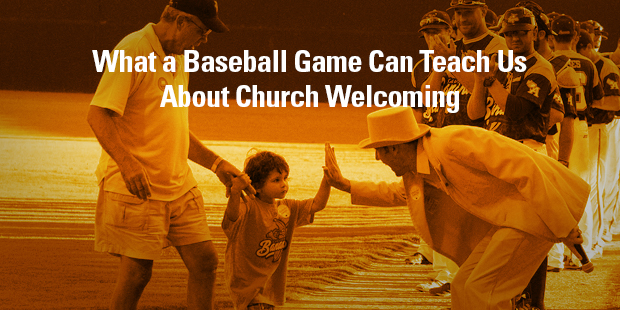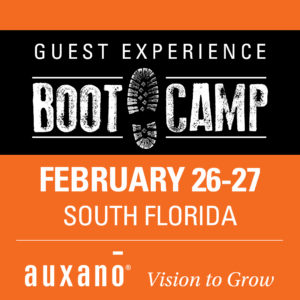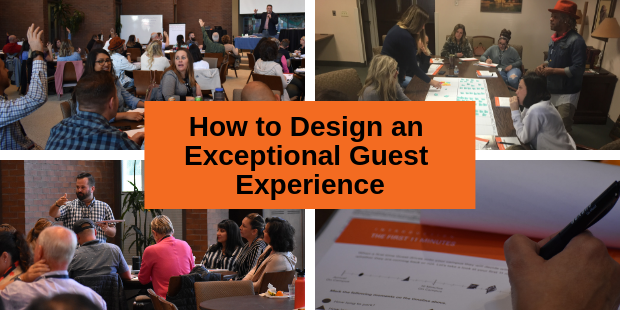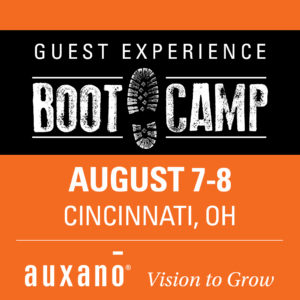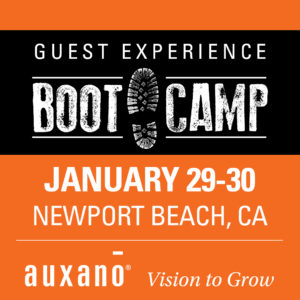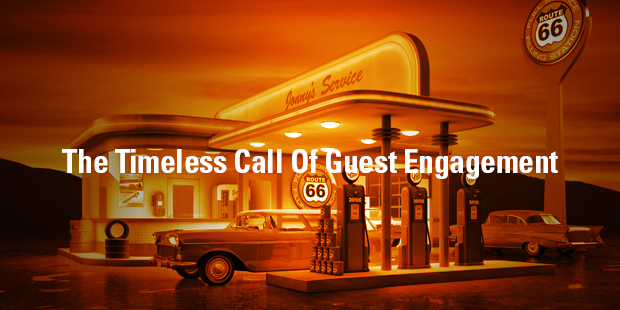
Great Church Hospitality Starts Here
Editor’s Note: During our August focus on Guest Experiences, we are honored to have some of the best voices in the world of Customer Experience provide guest posts for the Vision Room. As you read the content below, simply think “Guest” in terms of the “customer” the author is talking about – and you will benefit from the knowledge and expertise of these great minds.
If you don’t know by now, customer understanding is the cornerstone of customer-centricity.
Customer-centricity means putting the customer at the center; customer understanding is how you’ll achieve that.
What is customer-centricity?
A lot of people talk about being customer-centric, but it’s one thing to say that and another to be it! Customer-centricity is about putting the customer at the center of all you do.
Customer-centric companies ensure that they make no decisions, design no products and services, and implement no processes without first thinking of the customer and the impact that the decision or the design has on the customer. They ask, “How will this impact the customer? How will it make her feel? Does it add value, or does it create pain?”
In customer-centric companies, decisions are always made with the customer’s best interests in mind. The customer’s voice is brought into meetings and into conversations; the customer is always represented. Jeff Bezos’ empty chair concept is a great example of this and has been widely adopted by other brands.
It’s important to note that a customer experience transformation can only happen when there is a commitment to change the culture to one that is customer-centric, even customer-obsessed.
Being customer-centric happens by design. Customer-centric companies do the following to ensure the organization knows its reason for being, i.e., the customer, and to embed the customer into the DNA of the organization. They…
- Have visible (and visibly) customer-centric leadership, demonstrating a customer commitment from the top down
- Develop and socialize customer personas
- Speak and think in the customer’s language
- Use customer feedback and data to better understand their customers
- Are engaged in continuous improvement as a result of the customer understanding efforts
- Focus on products and services that deliver value for their customers, i.e., solving their problems and helping them with jobs to be done
- Have a commitment to customer success
- Engage with customers from the beginning
- Walk in the customer’s shoes to understand today’s experience in order to design a better experience for tomorrow
- Foster a customer-centric culture
- Empower the frontline to do what’s right for the customer
- Ensure all employees (front line and back office) understand how they impact the customer and her experience
- Recognize the customer across all channels
- Design processes and policies from the customer’s point of view
- Measure what matters to customers
- Encourage customer innovation
- Include customer-driven values in their core values
- Recruit and hire employees passionate about customers and about helping customers
- Incorporate the customer and the customer experience into their onboarding processes
- Train employees on how to deliver the experience that customers expect
- Establish a customer room that is open to employees 24/7 so that they can learn more about their customers and the customer experience
- Rewards and recognition reinforce employee behaviors that align with customer-centricity
- Have a C-suite executive who champions the customer across the entire organization
- Customers before metrics, i.e., every meeting begins with and includes customer stories
- Invest in the latest technology to support and deliver the experience customers expect
As you can see, becoming a customer-centric organization is a commitment that requires a mindset shift and a behavior shift. And, especially, some investments – financial, human, time, resources, technology, and more.
What is customer understanding?
Customer understanding is all about learning everything you need to know about your customers, i.e., their needs, their painpoints, the jobs they are trying to do, etc., and their current experiences in order to deliver the experience they expect going forward.
There are really three ways to achieve that understanding. The problem with these approaches is that, if not done correctly, you’ll be no further ahead in terms of understanding than if you hadn’t done them.
The three approaches are:
- Listen. Don’t just ask customers about the experience, listen, as well. There are a lot of different channels and ways for customers to tell you about their needs and desired outcomes and how well you are performing against their expectations. Understanding these expectations and identifying key drivers of a great customer experience are important outcomes of this exercise.
- Characterize. Research your customers. Identify the jobs they are trying to do. Compile key personas that represent the various types of prospects and customers that (might) buy from you or that use your products or services.
- Empathize. Walk in your customers’ shoes to get a clear understanding of the steps they take to do whatever job it is they are trying to do with your organization. Map their journeys to understand the current state of the experience.
These are all learning exercises. We walk away from them with a lot of knowledge about customers, but we need to make sure we truly understand what we’ve heard about customers, their needs, and their expectations. Without that understanding, the exercises have failed. Make sure they’re done right.
And then make sure you do something with what you learn! This is where customer understanding manifests into customer-centricity and becomes the cornerstone for it. Make sure to put the customer front and center.
Here are just a few things you can do to infuse the customer into everything the organization does. Key to this is to start at the beginning, i.e., start with the first day an employee starts working for your company. (Even better: start with the first day you start your company.)
- Onboarding: Showcase your customer-centric culture during the onboarding process so that new employees know what that means. This is a great time for them to learn what it means to be a part of your organization, i.e., knowing your brand promise, values and commitment, what it means to live the brand, where the priorities lie, and how to deliver a great customer experience. This is a great time to set the tone for employees.
- Ongoing training: You can’t expect that, as both the business and customer expectations evolve, employees will automatically know what to do and adapt/evolve, too. You need to train employees regularly to ensure they are kept abreast of new customer insights and new approaches to delivering a great experience. Be sure to provide updates on anything you’ve learned about customers, the jobs they are trying to do, and their expectations.
- Communication: What gets shared and communicated regularly is viewed as important to your employees. Not only does communication lend clarity, it is critical to a clear line of sight to the goal. Communication needs to be open and ongoing. Share customer feedback with employees; don’t keep it from them. Tell customer stories and stories of great experiences to teach and to inspire employees to deliver the experience they need to deliver.
- Rewards and recognition: When you recognize and reward those who consistently delight customers, you are reinforcing the behavior you expect from your employees, further confirming and solidifying the importance of putting the customer at the center of all you do.
Other ways to ensure the customer is always front and center, include:
- Personas on every wall: these help to remind employees who the customer is, what she’s trying to do, her pain points, what delights her, etc. – again, keeping her front and center in all you do
- Customer cut-outs: place these around the office – and especially in meeting rooms – to keep the attention on who really matters; they should include details of who the customer is and what she thinks and feels about the current experience
- CCO/CX professionals: in key decision-making meetings, especially, there needs to be a representative from the CX team present to represent the customer voice and perspective
- A real customer: imagine that! ask a customer (or multiple customers) to attend a meeting in which you’ll be making decisions critical to the customer experience
- Customer feedback: have you gotten feedback about the product or the touchpoint you’ll be discussing; share it with meeting attendees so they understand how customers feel about the current experience
- Journey maps: this might seem like a stretch, but if you can show executives/employees how the changes they plan to make impact the experience through truly walking in customers’ shoes, then that’s a powerful tool to have at your disposal, too
As you can see, all of the tools to facilitate and drive customer-centricity are rooted in customer understanding. In case there was any doubt, customer understanding really is the cornerstone of customer-centricity!
Want to know more about Guest Experiences at your church? Let’s talk! Connect with an Auxano Navigator here.

Tags: Annette Franz, Church Guest Experience, Guest Experiences, church hospitality













